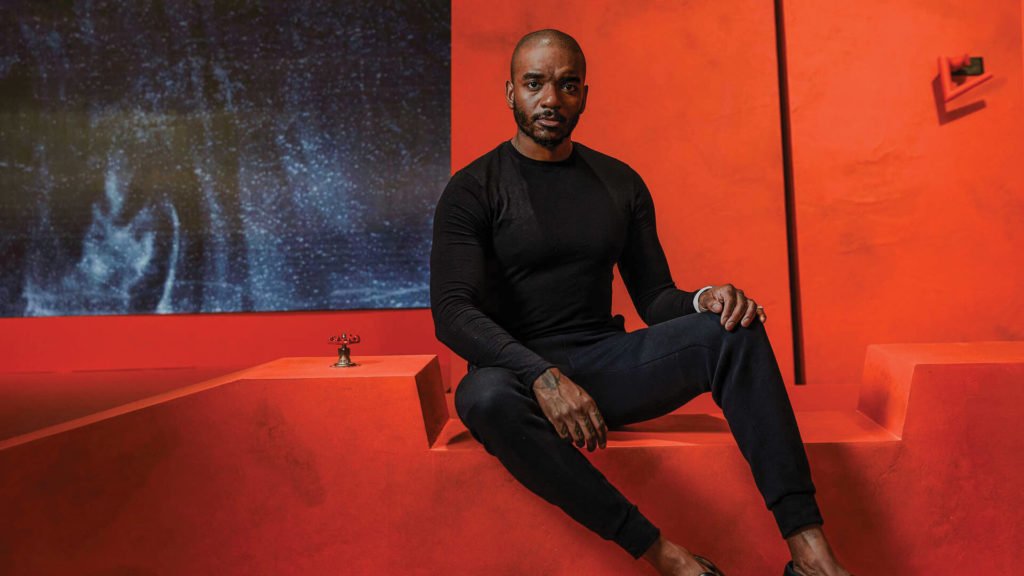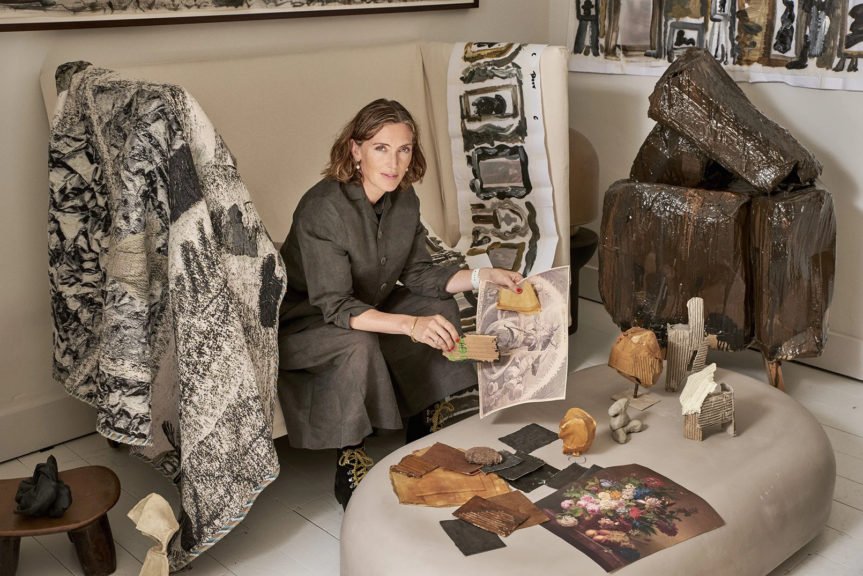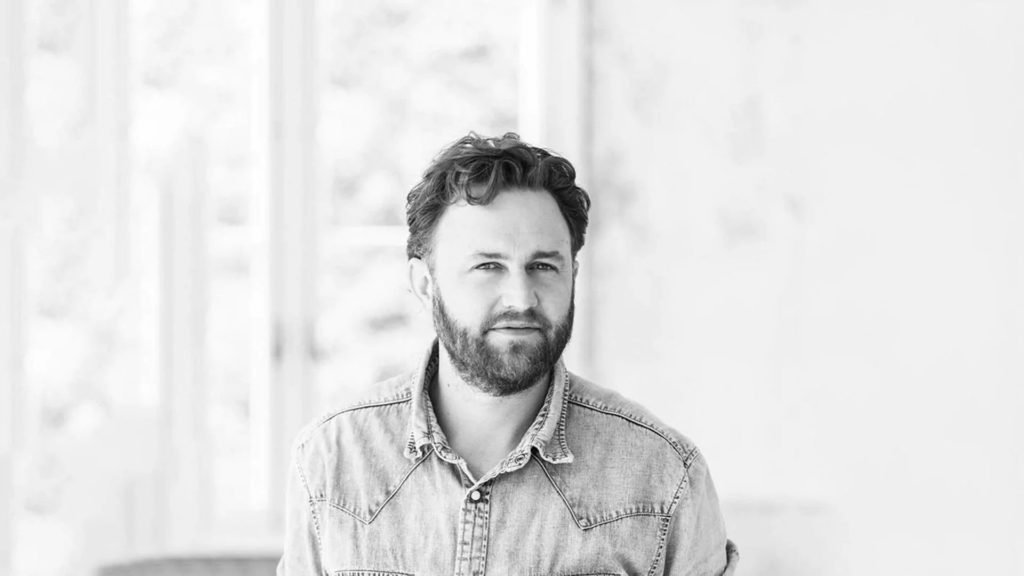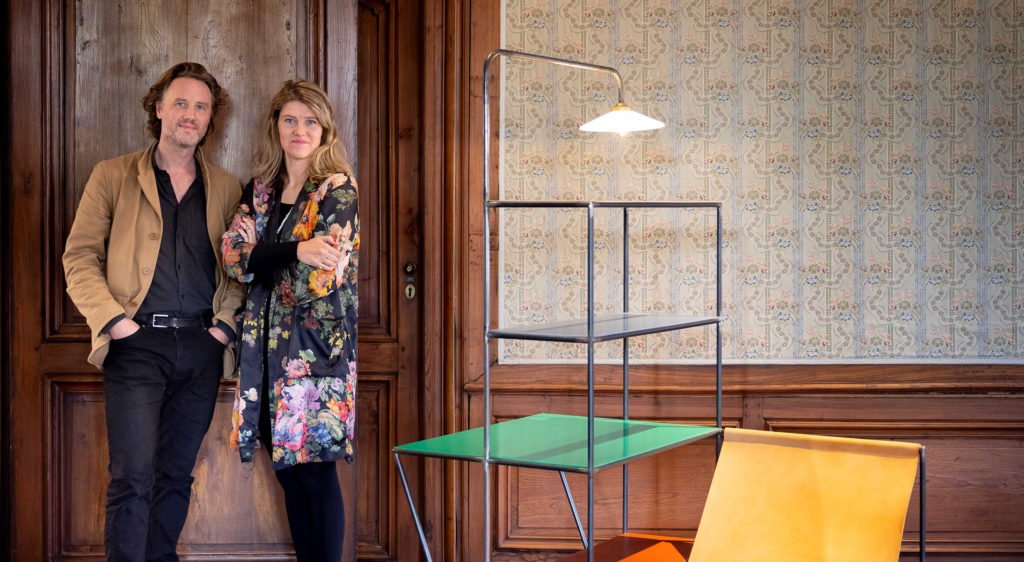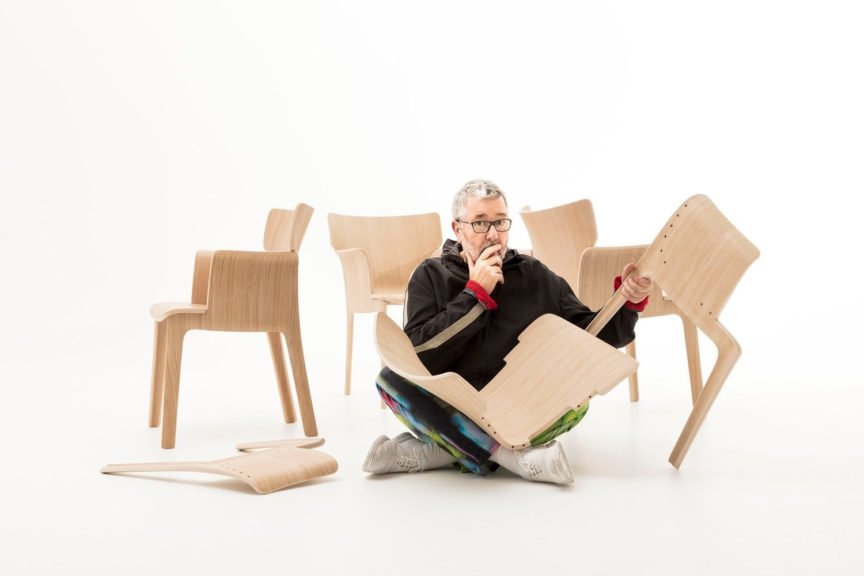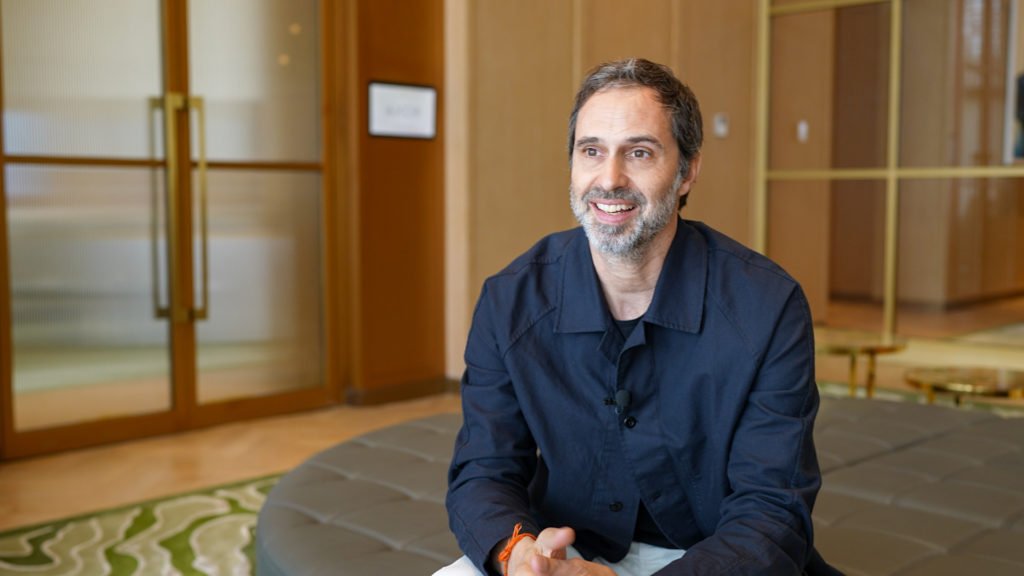Nada Debs’ is very much a homegrown legend. This Middle East-based designer created a unique fusion of Oriental and Arab motifs, and cultural references, that pioneered an entirely new style – one that drew on her own cultural heritage while paying homage to both the Middle and the Far East. She opens up to Love That Design about her childhood and the impact it had on her hunt for a personal identity.
Beirut-based designer Nada Debs’ reach goes well beyond her native Lebanon and Japan. A regional design star that has achieved iconic international acclaim, her ability to interpret traditional craft into accessible, contemporary design has resonated with a global audience, looking for modern design pieces that also have soul and demonstrate skill.
What brought about your cross cultural design inspirations? Where did it all start?
I grew up in Japan – my family has been settled in Japan for over 100 years. They always insisted on keeping our identity intact, through being Muslim. So, in an environment that was very Western (you had Japanese Asians on one hand, Americans, and children of missionaries who came to teach Christianity to the Japanese people), my parents really wanted us to retain our identity. And they didn’t do it through music or poetry, they did it through understanding Islam. Since there weren’t many Muslims there, as a child it made me feel left out, that I didn’t didn’t belong. This need for belonging became an important issue in my head. I have the ability to observe myself in retrospect and I see that everything I do is though wanting to belong, wanting to be comfortable.
Tell us about your design journey
Between growing up in Japan, going to America to study, moving to the UK to work, and finally coming to the Middle East 20 years ago I thought that when I came here, I would find my identity. But I realised that that wasn’t the case – I had to create my own because, in the end, I’m a product of my environment. And so, it was through my work that I found out who I was. When I came here I was very interested in handcraft (even whilst living in the UK, I saw how much hand craftsmanship was valued, and over time realised this is what has true depth. When I moved to Beirut 20 years ago, I looked around and asked myself, ‘What is Arab furniture?’. I noticed that it had been stuck in a style 200 years old with the Ottoman influence – furniture made in Damascus for the Ottoman Empire. All I would see around me was a lot of Louis XIV and Louis XVI pieces, with woodworkers and cabinet makers creating French style furniture, or alternatively, super modern, sleek copies of B&B Italia or Roche Bobois. The concept of furniture design did not exist in the Middle East at the time. When I started to ask myself what construed ‘Middle Eastern’ design, that is what led me to explore craft in Damascus. Over the course of a trip there, I saw beautiful mother-of-pearl inlay work, and the pride people took in making it. But I felt sad for them, because the clientele wasn’t connecting with this work anymore, because this beautiful intricate workmanship came in the form of a very traditional look that a younger generation wasn’t able to relate to. At that point, I started to wonder what I could do with this craft, apply it in new ways, and allow people to appreciate it.
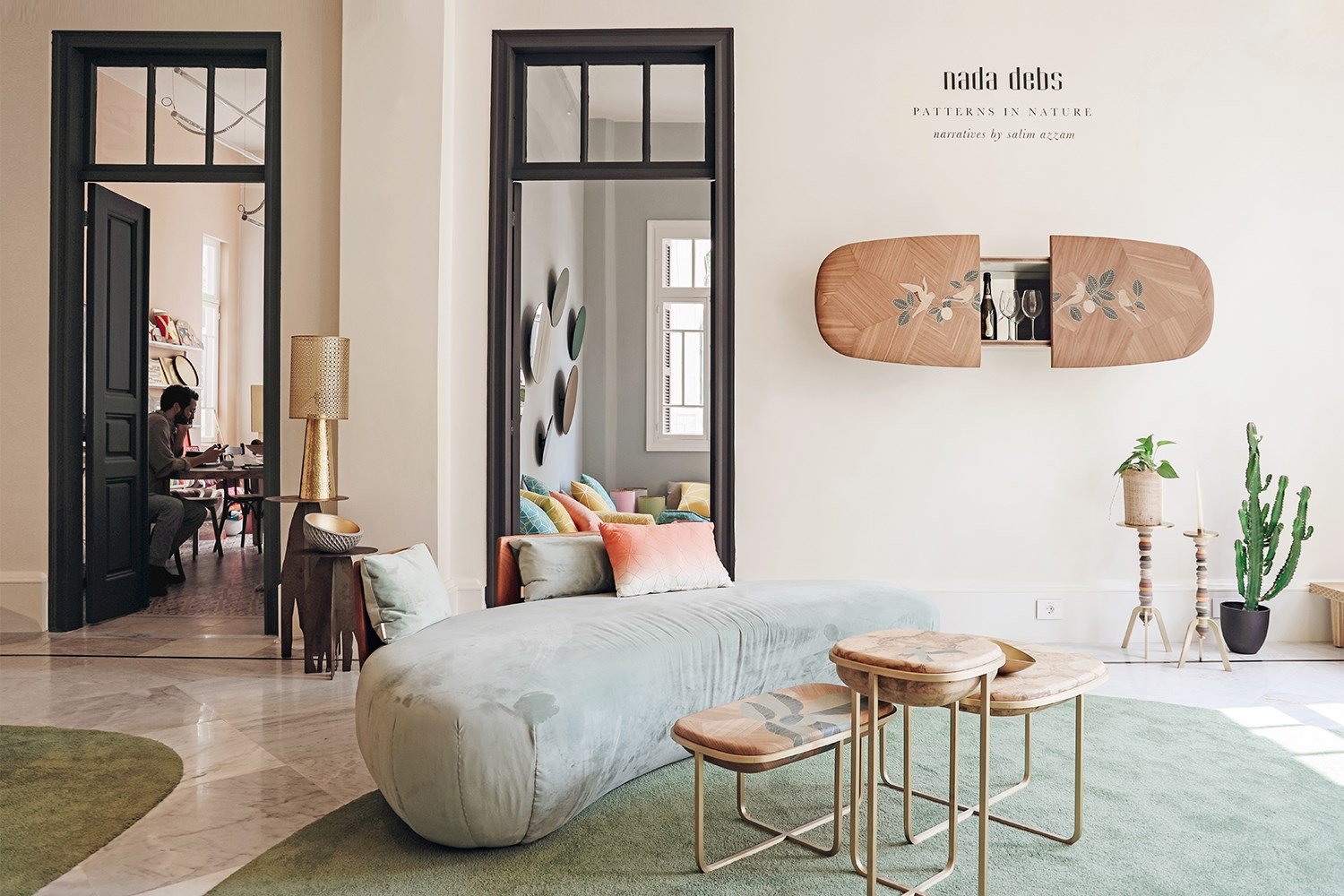
Nada Debs’ boutique and studio on Beirut’s popular Gemayze street
Taking traditional craft and bringing it to the new age
For me it was only natural to simplify – apply the Japanese way of thinking, which is bringing everything down to its essence. I thought what if we just silenced the form, so it remains really pure, thus highlighting the craft. I asked the craftsmen to create simple designs, mostly geometric patterns, which I brought back and used in simple bedside tables or consoles. I was still working from home then and somehow, this style took on a life of its own. It was revolutionary at the time because it was very relevant to our part of the world, yet embedded in a very ‘Zen’ style, which felt Asian, but also very Oriental.
Basically the two Easts, the Far East, and the Middle East.
Almost as if I was spanning the Asian continent, which is the journey my family took when they went to Japan. The Silk Road was an exchange of craft techniques – glass techniques went to Bohemia, from China, ceramics started to open up in Turkey or Constantinople at the time, or silk in Venice. It was an exchange of ideas. And in a way I was exchanging ideas too, bringing something new to the table.
All my life I used to think I had to choose between being Japanese or being an Arab, my furniture showed me that I could be both, I could find a balance in this duality. Everything I do today is really about finding a balance between unexpected things, whether it’s culture or materials. I call our identity Neo Arabian, because there’s no term for what I do. I tell people my aim is to be Hermes for the Middle East. Hermes takes pride in their craft and heritage. I want to take pride in what we have because we have a lot to offer and a lot to explore. And so, I feel like I’m a craft custodian, where I’m trying to give craft value and make it a luxury product.
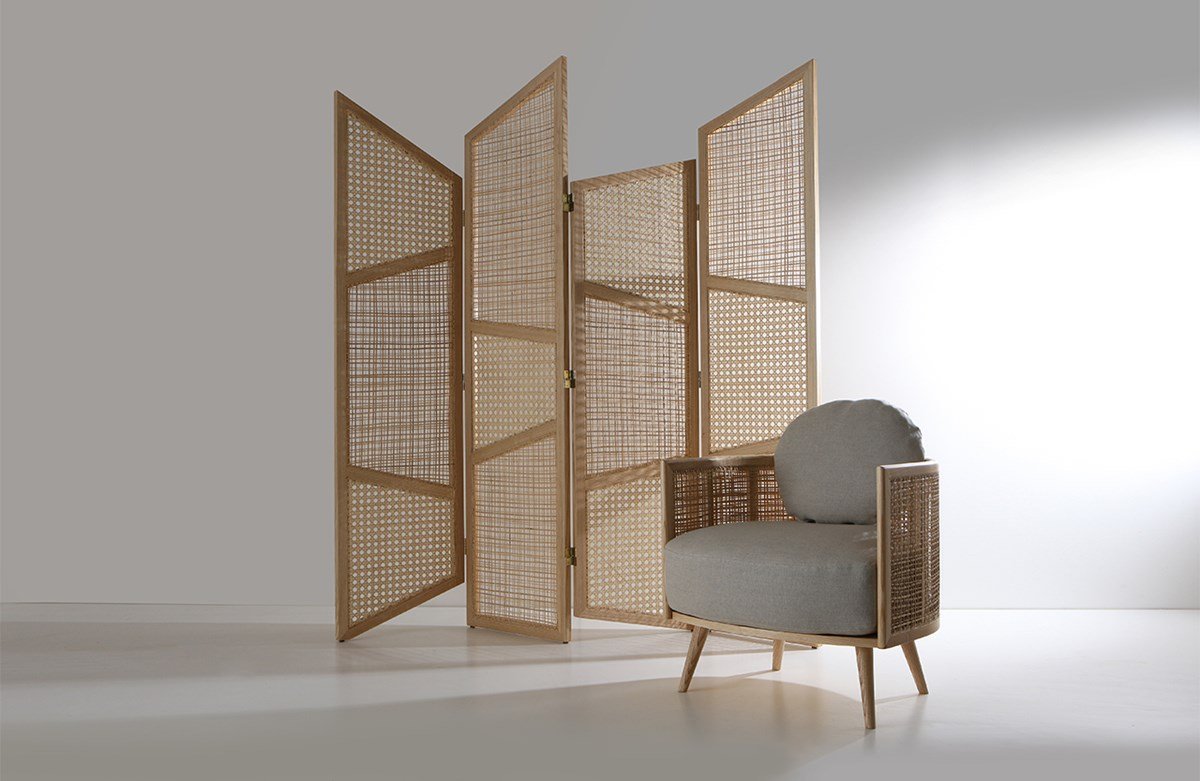
How do your parents feel about this career path?
They were surprised because as a little girl, I was shy. My family comes from a very mercantile background – they work in textiles, exporting hundreds and thousands of metres of fabric every month. So, when they see someone taking six months to produce one table, they don’t get it. t
They need to know it’s viable. Which is probably why, while I’m very creative by nature, I also have that sense of business. And that’s probably the reason it was easier for me to become international because I have a structure behind me. Nevertheless, the journey was all organic. I started off from a single room, moved on to building a website, and so on till the thriving business we have today.
What would you say was your big breakthrough?
At the end of 2003, beginning of 2004, I opened a boutique in downtown Beirut where I showed all my work. I called the collection East and East, which also happens to be the name of my company. This boutique showed that, first of all, I had a very strong identity that stood out from anything else in the world that was being done, and second, that there was a category of design called furniture design or ‘product design’ (the concept of ‘furniture designer’ was not so prevalent in the Middle East at the time).
I was featured in a lot of magazines, and I did shows in Paris, London, New York. In this part of the world, when you’re in magazines, people look at you in a new light, so it reverberated in an amazing way. And because Beirut was just opening up, a lot of progressive people from Kuwait, Saudi Arabia and more, with sleek modern homes – people hungry to have something of their own identity – would love to own a little coffee table from Nada Debs that had some handcraft to it. It would suddenly give the whole house some soul.
I understood both cultures, you know – the Western culture, which is practical and modern, and the eastern culture which has layers and depth. So, there’s no real ‘one moment’ that defined my career, but I would say that after I went public, my work became a movement and it took on a life of its own. I went from a one-woman show to a designer studio.
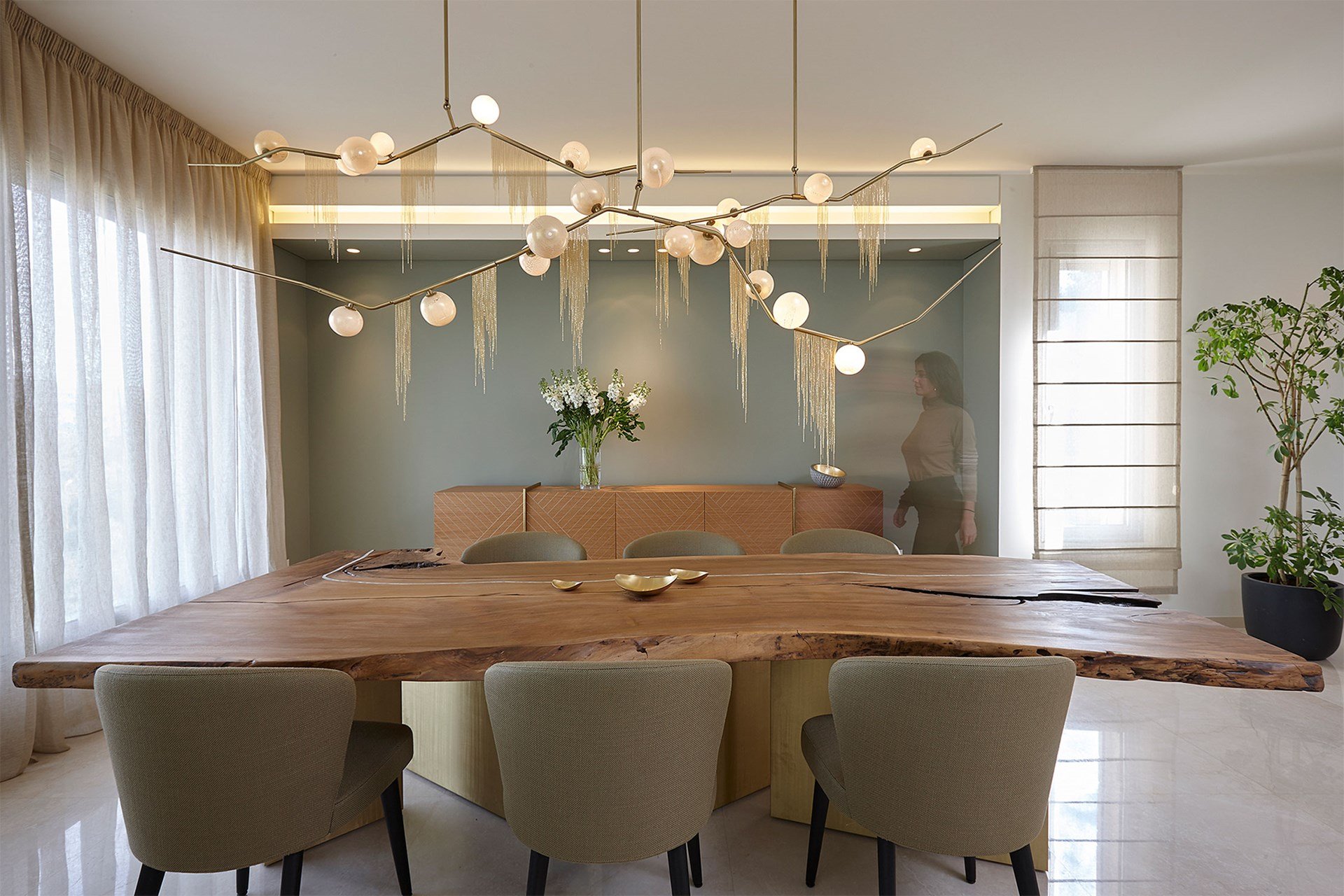
What is your main source of inspiration?
Craftsmen and fashion. I like fashion because it is fast moving. I see what people are doing with their craft, and I ask to myself, ‘How is she applying the craft in her clothes’. This inspired me to think of ways to apply craft in my own pieces. Craftsmen inspire me because when I’m watching them work, I get ideas. Clients inspire me too – I could be sitting with you and you could say something, and an image would come into my mind. I have this ability to listen and transform thoughts into a product.
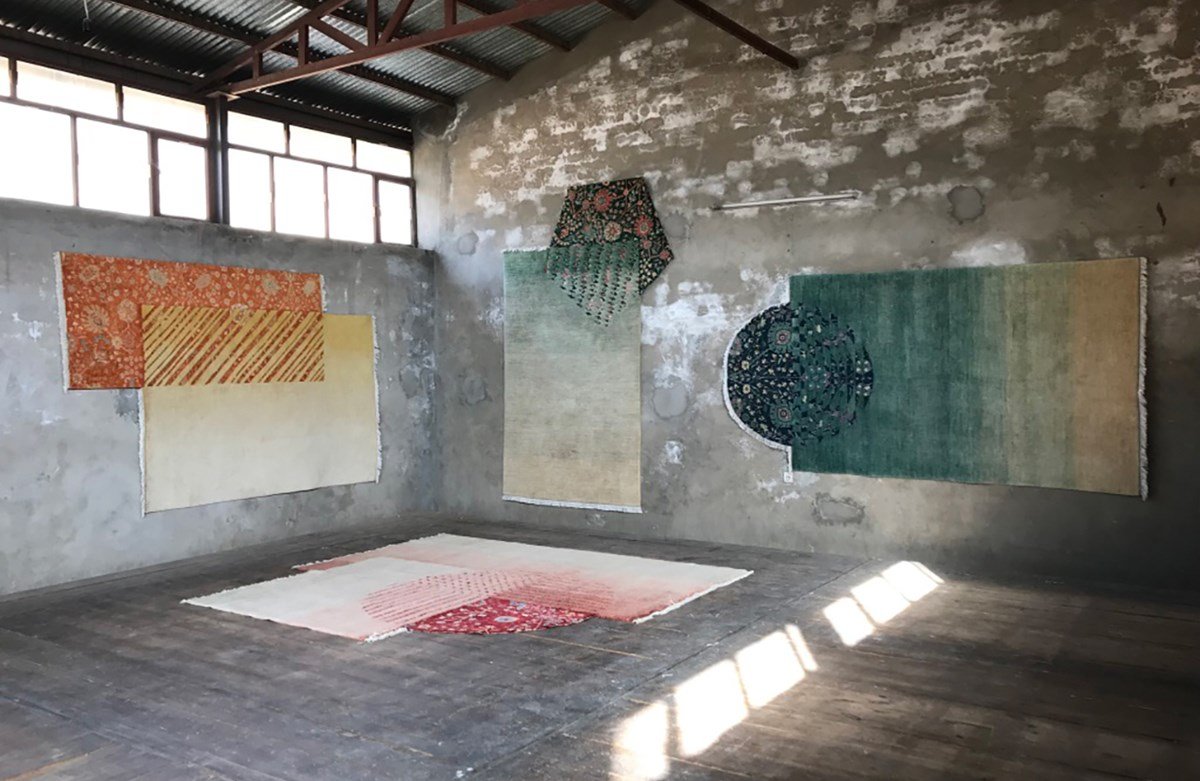
If you were not a designer what would you be?
I really like marketing and branding. I sometimes see opportunities. I can see the whole project coming together. I like the idea of creating brands.
If you were to design anything without constraints, what would it be?
I actually would love to design a hotel, and a hotel concept, because it incorporates everything. There’s a lot out there but I still feel that there’s room for something that demonstrates a mix of cultures.
How would you describe yourself as a person?
I’m a listener. I think I’m compassionate. I love sewing and knitting – things that use the hands. I like making difficult things. I love watching movies. I have a quiet presence – I think people like to have me around. I’m also very curious and am constantly asking questions. People like that, so they feel important when they’re with me, and they feel valued.

